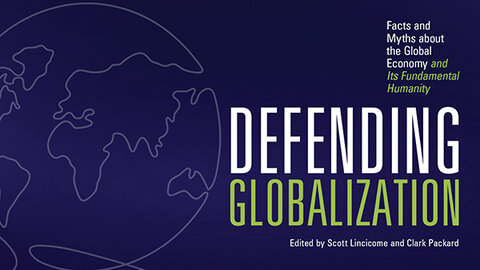With yet another budget having passed by, the economic landscape remains challenging for businesses.
The economy spent most of 2023 teetering on the brink of recession, consumers are still feeling the pinch, and the taxation burden stands at a 70-year high as the UK seeks to pay off the enormous public expenses that were incurred during the Covid pandemic. Factoring in all manner of global supply chain constraints, geopolitical uncertainties and a volatile energy market on top of this, it’s easy to see the heady mix of challenges facing business leaders in 2024 and beyond.
The budget itself didn’t shift the dial in any meaningful way for most enterprises. Corporation tax remains at 25%, with a 19% rate on profits up to £50,000. Meanwhile, the 100% full expensing regime has been extended to include leased assets – a move which will benefit construction and plant hire businesses.
On a more optimistic note, however, the budget announcement did confirm that inflationary pressures are starting to ease. In tandem, many consultants and forecasting bodies are now seeing slithers of light at the end of the tunnel. CBRE, for example, expects inflation to fall to the Bank of England’s 2% target by early 2025 – this will allow for interest rate cuts that support real terms income growth and ease debt burdens on businesses. This will in turn help a stagnating economy to start growing again.
In its Economic Outlook for 2024, CBRE also predicts cuts in interest rates will make for a more attractive commercial real estate market. This, alongside the recovering consumer demand that is expected to come as real estate incomes increase, point to hope for a healthier environment for businesses which own or lease properties.
ESG momentum is building
This doesn’t mean businesses can take their foot off the gas and wait for the good times to return. Alongside a recovering economic picture, compliance requirements around ESG are tightening and carry implications for a huge number of organisations.
For instance, there will soon be a crackdown on businesses and commercial real estate operators which fail to comply with minimum EPC ratings rules. At the moment, the expectation is that all let commercial property will be required to have a minimum EPC rating of band C by 2027, with that shifting to B by as soon as 2030. Given the current minimum is E, this could equate to a lot of work that needs doing in a short space of time.
Government figures point to this conclusion. According to its database on EPC performance, more than a quarter of commercial buildings currently have an EPC rating lower than C, putting them at risk of non-compliance.
Gone are the days when sustainability and energy efficiency were ‘nice to haves’. Organisations need to follow up rhetoric with actions, and that means making their workspaces as environmentally responsible as possible – for many businesses, this is a key part of ESG reporting criteria.
Tangible progress requires a mix of bigger picture and granular thinking. Combined, what may appear like small details such as furniture and waste management, and simple things like encouraging good habits with lighting, water use, workstations and HVAC, can actually make a big difference and build a broader sustainability-driven culture.
Tracking progress and identifying areas for improvement are also critical capabilities. Here, smart building technologies such as building management systems, building information modelling (BIM) and digital twins are providing asset managers with data-driven insights on key sustainability metrics such as water and energy use, and how these are impacted by occupancy trends and behaviours.
Times are changing
The relationship between ESG and corporate real estate is just one of many big trends I have observed during my time working in this space. When I first joined Business Moves Group, offices felt like mini empires. Cubicles were the norm, corner offices were the dream, and layers of smoke filled the room. In fact, the introduction of the smoking ban in some ways signalled a shift in behaviour. Colleagues would instead congregate in groups outside, chat about their day and begin processes of joined up thinking. Informal sub-meetings started to happen outside.
We also started to see a shift towards higher all-round standards of health and safety, as well as the first steps towards sustainable practices through the minimising of paper use. People saw this as an opportunity to improve and bring some vibrancy to their workspaces. Meanwhile, boxed away corner offices started to disappear as leadership became a more visible presence.
The pandemic, of course, served to accelerate all these trends.
Since remote working became the enforced norm, workspaces have been reimagined to fulfil more collaborative applications as the reasons for coming into the workplace shifted. This has led to challenges for some business leaders in relation to occupancy and certainty of building schedules. Workspace use can vary dramatically across a week, which makes it difficult to optimise various building management processes. However, I believe we may start to see a return to a more consistent pattern of people working in offices and other commercial real estate, and many sectors are already bringing back required office days and quotas.
Where businesses decide to locate themselves remains of critical importance, not least when it comes to attracting talent. From technology and finance to marketing and manufacturing, companies operating in industries across the entire breadth of the economy are competing in a ferociously competitive labour market.
Location of premises can be a decisive recruitment factor. While I don’t see huge trend in organisations moving out to urban areas, as such, it is interesting to note the success of innovations hubs such as Cambridge and Reading Green Park, which is now home to iconic brands such as PepsiCo, Bayer, Thales and Virgin Media. Companies appear to gravitate towards other successful enterprises.
As we advance through 2024, the economic and real estate picture for businesses should start to get a little brighter. Those which stay attuned to changing dynamics and trends, including intensified ESG criteria and shifting workplace norms, will be better placed to emerge strongly from the other side
Read more:
What does the budget mean for the ever-evolving world of corporate real estate?
























